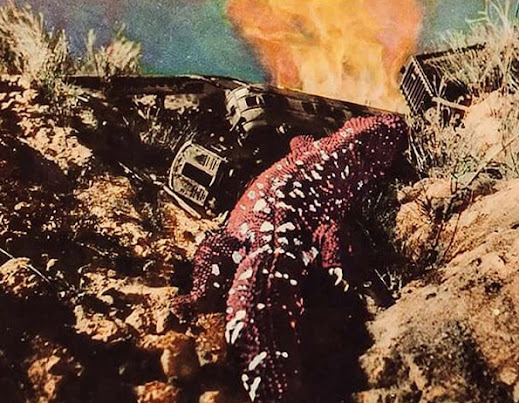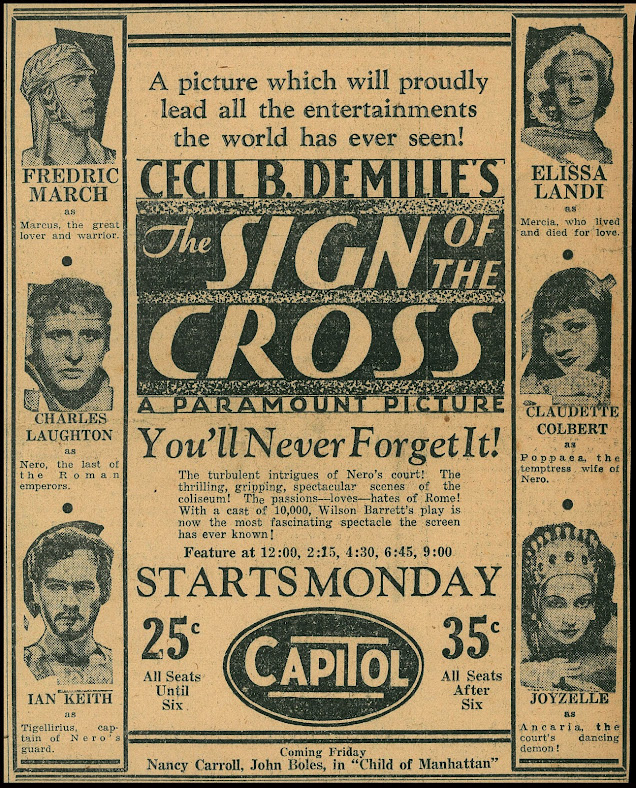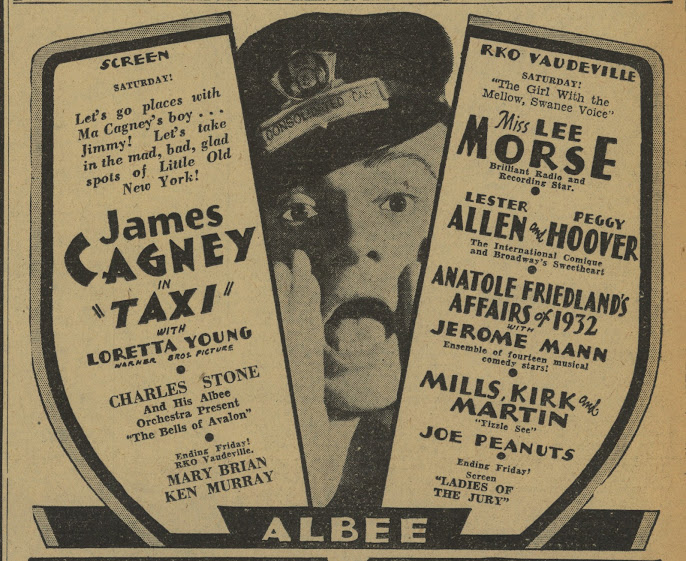Watch List for 10/30/2023
Watched: It Started in Naples, Screwball Squirrel, and The Reptile
IT STARTED IN NAPLES (1960) --- Clark Gable’s next to last. He crossed the Atlantic and began eating pasta as if it was just invented. Naples and the Island of Capri had been photographed before, used even as feature location, but never like this. No scene goes long without view of vistas, a natural of course for VistaVision. You’d think this was first occasion for VV, so emphasized was scenery (not since initial travelogues showing off the process had Paramount been so invested in sights for their own sake). Hotel conversations move out onto balconies to keep eyes on prize that is natural backdrop. This one comes close to making us hop a plane and see for ourselves, as how much could raw landscape change over sixty plus years? To pasta reference that led, here was indeed Gable’s downfall, for like Columbus in reverse, he discovered what bounty the old world served and couldn’t push heaping plates away. Payoff was getting home for look at completed It Started in Naples and realizing how tubby those treats made him. “Why didn’t you people tell me how fat I’d gotten?” he railed, but who would have interrupted their own bountiful meals for that? CG is the ugly, let’s say impatient, American abroad, basis of jokes at least for a first half before he ties with Sophia Loren, who seems not quite the King’s type, though she can wear heels beside him, not a privilege granted where Loren co-starred with Alan Ladd in Boy On a Dolphin. Story and dialogue pokes fun at foreigns in ways expected then --- we realize the war was fifteen years past and a new generation of provincials had come up since. Gable refers to having been there during conflicts but still watches his wallet and women of the street who might take advantage. He’s an old rooster set in ways, and if that is how you prefer him, OK, which a public must have, else there would have been no Teacher’s Pet and But Not for Me preceding this.
SCREWBALL SQUIRREL (1944) --- Good thing there is spell check, as I could not in a lifetime write "Squirrel" correctly. An HD bonus with The Thin Man Goes Home on Blu-Ray, I watched and was again impressed by Tex Avery’s jape at, in particular, Disney cuteness, plus barbs toward less inspired Metro easels. Did these folk realize Avery was ridiculing them, or was Screwball Squirrel just a good-natured rib? If so, it was with a stiletto, for how could cuddly bunnies survive assault like this? Title squirrel is abrasive beyond funny. We wish at moments for the hapless dog to capture and fry him. Daffy and Bugs had no meaningful competition here, yet SS was a bold invention, reprised a couple more times, but not to survive. Avery needed, very much wanted, a character or characters to protect turf at MGM, Hanna-Barbera walking proudly past him to collect what I assume were higher pay packets. And yet Tex's would be a better legacy, one imitated to present day, his viewpoint catnip for a counterculture. Did colleges host Tex Avery festivals in the sixties or seventies? He thought little enough of past work, figured himself played out in a culture he helped define, along with Clampett, Jones, some of others. To think Avery had to scramble just to do bug spray commercials, yet those were art as well, if in thirty second bites. Too bad we lost cartoons as sustainable product, money available during a Classic Era to make more as a mass audience wanted and waited for them. Such was moment in history gone for good. Even animated features seem imperiled. Has Pixar played out? Thanks to Warners for releasing the Averys on Blu-Ray. Seems most are out by now --- any stragglers left from the MGM group?
 |
| Here is a Drawing I Made of The Reptile After Seeing It at the Liberty in 1967 |
THE REPTILE (1967) --- Among “Cornwall” cycle of Hammer films, done economically and in pairs to save precious funds, the company as always on knife-edge of solvency. The Reptile was shot in 1965, played to US audiences over a year later, the Liberty getting it more like 1967 and a few weeks after intended co-feature Rasputin, The Mad Monk. Hammer differed from mainstream features of the time. Even imitators like Amicus out of England could not truly duplicate their singular brand. I saw recent where Merchant/Ivory used Hammer as visual model for their lush literary adaptations. Smart Boys. Cuts were made to Hammer output we did not know about at the time, even as monster magazines sort of hinted at highlights seen only in Japan or far-flung elsewhere. The Reptile is of a snake woman and her victims buried, then exhumed, repeatedly so, for no discernable reason other than to present us with varying views of decay. There was intelligence in these yarns almost despite themselves. I felt flattered that Hammer never played down to me. Behind-scene stills show sets little bigger than closets. What this company did with not a lot was remarkable. Fans turned scholar have made careers, written books by score, about this little UK engine that could, and did. The Reptile like others of Hammer was more mystery than monsters, a riddle to be unraveled and let poster-featured fiends stay in background until reveal is appropriate and necessary. In other words, Hammer practiced more restraint than they were given credit for, especially by compare with what would come soon after (Night of the Living Dead ... yecch). People of Hammer, both acting and producing/directing/doing design or make-up, were like family gathered for gardening or picnic, all upon shared mission to scare, but keeping us comfy during the doing. I like Hammer the more for each of endless repeats. Nostalgia factors in, plus fact they're plain well-made and eternally satisfying.












































